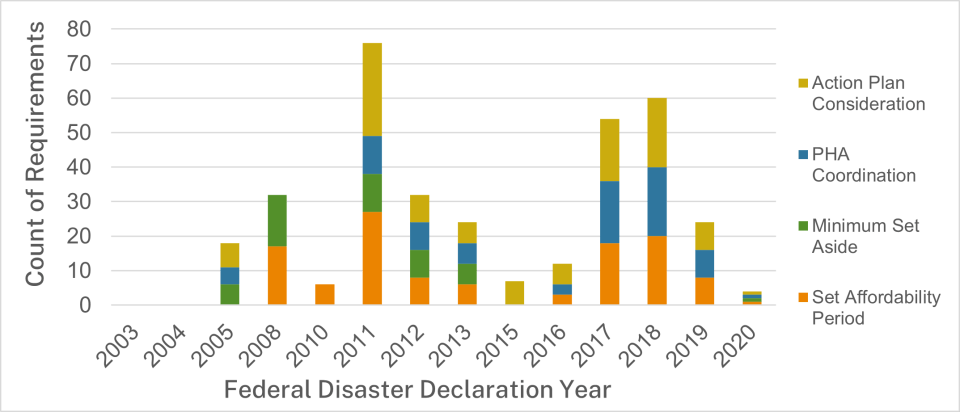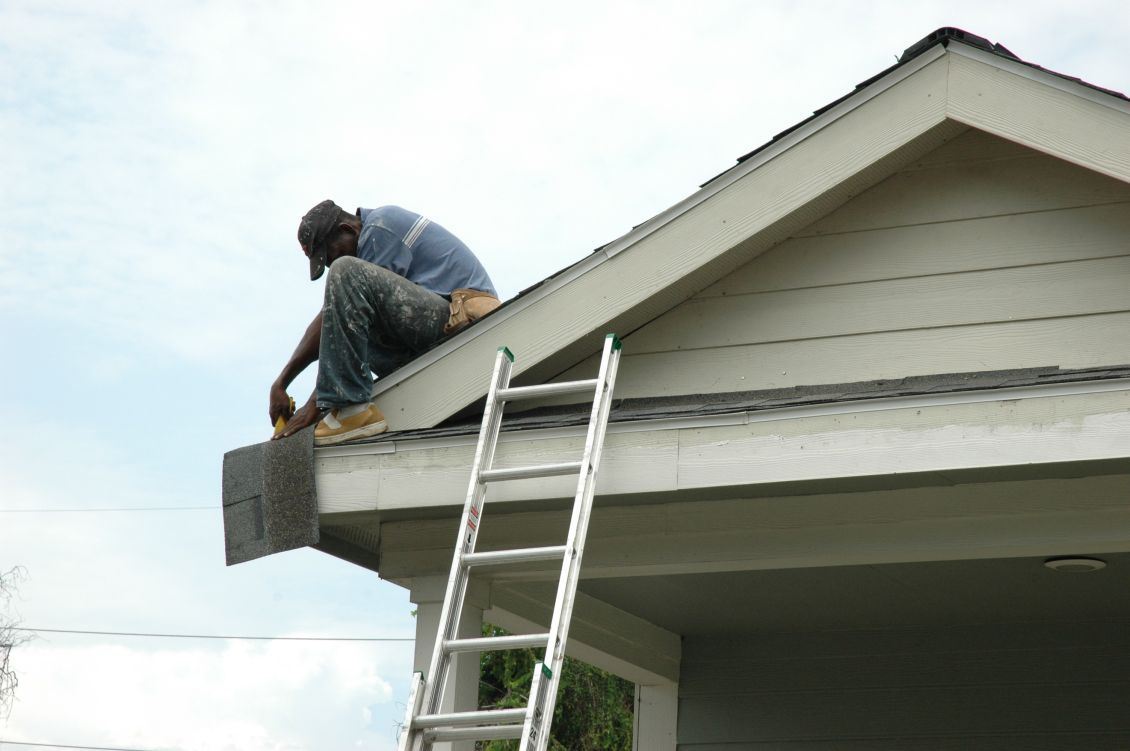Severe storms, flooding, and other natural disasters can make an already tough market for affordable rental housing nearly impossible to navigate. After such disasters, renters can face higher costs — and lower-income households can be priced out — after structures are damaged or destroyed and demand for rental housing increases.
Community Development Block Grant Disaster Recovery (CDBG-DR) funding from the US Department of Housing and Urban Development (HUD) provides critical assistance to states and localities affected by major disasters, and new research shows that this funding can mitigate some of the negative impacts on rental markets by helping reduce rent growth and encouraging construction of new multifamily housing following a disaster. An analysis of Colorado counties that received CDBG-DR funding after major disasters in 2013 found that monthly rents in those counties were 4-6% less expensive on average than they would have been without the CDBG-DR funding.
These findings are featured in a study, “CDBG-DR, Rental Requirements and Rental Market Impacts,” recently included in a special issue of Cityscape, a HUD research publication, that looks back on 50 years of the CDBG program. The study was co-authored by Enterprise’s Andrew Jakabovics and Rachel Drew, along with colleagues from Georgia Institute of Technology, California State Polytechnic University at Pomona, and Occidental College, and it builds on work conducted last year for a Brookings Institution convening on disasters and the rental housing community.
CDBG-DR Rental Requirements
The study explores the effectiveness of the CDBG-DR program on rental markets, with specific attention to how different sets of rental requirements may correspond to changes in multifamily rents and building permits issued. The authors collected data over 17 years of disasters (2003-2020) to track the different rental requirements included in CDBG-DR grants over time, which generally fell into one of four categories:
- Action Plan Considerations: Grantees must address the needs of both homeowners and renters in their plan for allocating resources.
- Public Housing Authority (PHA) Coordination: Grantees must work with PHAs to better coordinate the distribution of rental assistance and resources.
- Minimum Set-Asides: Grantees must allocate a minimum percentage of the funds for rental housing projects.
- Set Affordability Periods: Grantees must ensure rental units developed with the funds remain affordable for a certain period of time.
This data reveals a notable increase in rental requirements placed on CDBG-DR funds starting in 2005; all grants between 2007-2020 had at least one requirement included. The most common requirement was action plan considerations, which were included in all grants from 2011-2020, followed by designated affordability periods, which were part of every grant from 2010-2013 and 2017-2020. All CDBG-DR grants authorized between 2017-2020 had three of the four rental requirements included – action plan considerations, designated affordability periods, and PHA coordination. Minimum set-asides of CDBG-DR funds for rental housing uses, meanwhile, were more common between 2005-2013 due to statutory requirements in place during this period, though they were a part of only one grant afterwards.

The increase of rental requirements in CDBG-DR grants over time demonstrates the specific need for rental housing following disasters. Renters are often underserved by disaster recovery programs that primarily target property owners, who may or may not offer nor price their repaired or newly constructed housing for returning renters. Renters are also more likely to not receive or even apply for disaster assistance, due to a lack of awareness of available resources, challenges navigating complex application processes, and delays between disasters and when assistance funds are provided. By adding requirements for grantees to address renter needs, HUD may ensure that renters are not left out of long-term disaster recovery efforts.
Rental Market Outcomes
While HUD’s expanded emphasis on using CDBG-DR to support renters following disasters is admirable, the effect of this shift in policy and funding on rental markets has not been widely explored. To fill this gap, the Cityscape study also sought to compare rental market outcomes between disaster-impacted areas with and without CDBG-DR funding, using a case study of Colorado counties affected by severe storms, flooding, landslides and mudslides in 2013.
The study looked at nine counties included in the 2013 disaster declaration that received immediate Federal Emergency Management Agency (FEMA) Individual Assistance (IA) and/or Public Assistance (PA) funding, of which only six also received subsequent CDBG-DR funding to address housing needs. This CDBG-DR grant included all four rental requirements for the full grant period, thus presenting a unique opportunity to assess the full impact of CDBG-DR on rental market outcomes.
The first outcome explored was effective rents on multifamily rental units as measured quarterly at the zip-code level by the CoStar group. Rent data was paired with other details on county-level population and housing market dynamics to control for other potential influences on rent levels following the 2013 disaster. A difference-in-difference (DID) model was used to compare changes in rents in counties with and without CDBG-DR funding, starting from the end of the grant period, three years following the disaster. The analysis revealed increases in average rents in all disaster-impacted counties, though the rate of growth was lower in counties with CDBG-DR funding by 4-6%, equivalent to about $60-$90 in monthly rent.
The second outcome studied was growth in building permits for multifamily rental housing in the disaster-impacted counties, testing the theory that the slower rent growth observed in counties with CDBG-DR funding was related to faster rebuilding and additions to the rental housing stock due to the rental requirements included in the grant. The analysis supports this hypothesis, showing higher rates of permits for new multifamily rentals where CDBG-DR funding was received. Notably, growth in permits for single-family homes did not vary by county, suggesting further that the CDBG-DR requirements were effective at encouraging more rebuilding of multifamily rental housing following the 2013 disaster.
Implications for Future Policy and Research
The findings of this study build on those from the Brookings Institution report by the same authors, which found that rents increase more in places impacted by disasters than those not impacted, and that CDBG-DR funding tempered some of that increase. By showing the expansion of rental requirements in CDBG-DR, and tracing those requirements as applied to a specific disaster grant to changes in rents and building permits relative to other disaster-impacted areas, this study supports the value of including affordable rental requirements in future disaster recovery efforts.
Future research should continue to explore disaster impacts and the effect of CDBG-DR funding on rental markets in more cases, to confirm generalizability of these findings and identify other circumstances, such as compounding disasters or economic conditions, that may enhance or inhibit beneficial effects from federal disaster housing assistance. At the same time, policymakers should consider mandating rental requirements in all future CDBG-DR allocations, to ensure renters are not left out of the rebuilding and recovery process following disasters. These requirements may be even more effective if combined with other enhancements to CDBG-DR, including permanent authorization of this valuable disaster recovery resource, which would help address the lag between disasters and the deployment of recovery funds, which especially harms renters.


